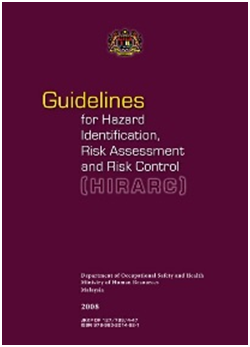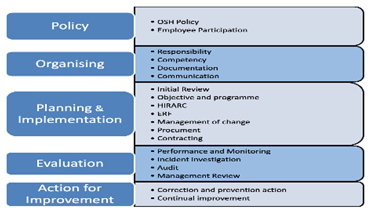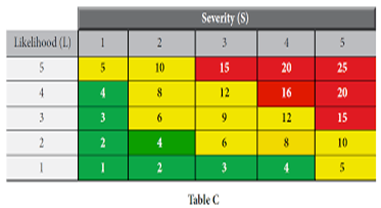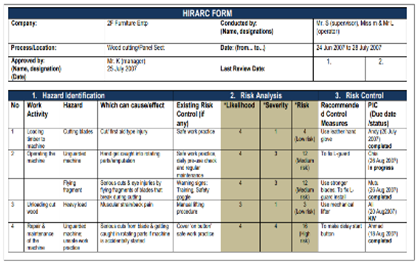In order for us to achieve the objectives of OSH we need to look into HIRARC which is the basis of occupational safety and health. HIRARC is a compound word which is made up of three consecutive activities running one after the other. The activities consist of Hazard Identification, Risk Assessment and Risk Control.
Occupational Safety & Health Act (Amendment) 2020 (Act 514)
New duties on principal, employer and self-employed person (Compulsory)
Duty to conduct risk assessment
There is now a duty on every employer, self-employed person and principal to conduct a “risk assessment” in relation to the safety and health risk posed to any person who may be affected by his job at the place of work. Further, if the risk assessment indicates that risk control is required to eliminate or reduce the safety and health risk, the employer, self-employed person or principal shall implement such control. For the purposes of these duties, “risk assessment” is the process of evaluating the risks to safety and health arising from hazards at work and determining the appropriate measures for risk control.
With regards to the duty to conduct risk assessment, the Guidelines for Hazard Identification, Risk Assessment and Risk Control 2008 issued by the Department of Occupational Safety and Health provide a useful starting point of reference for employers, self-employed persons or principals alike.
Increased penalties and punishments for recalcitrant employers, self-employed persons, principals, and manufacturers
The fines that may be imposed against employers, self-employed persons and principals who breach their respective duties under Sections 15 to 18 and the New Sections 18A and 18B of the Amended OSHA are increased from RM50,000.00 to RM500,000.00
The purpose of this guideline is to provide a systematic and objective approach to assessing hazards and their associated risks that will provide an objective measure of an identified hazard as well as provide a method to control the risk. It is one of the general duties as prescribed under the Occupational Safety and Health Act 1994 (Act 514) Amendment 2020 for the employer to provide a safe workplace to their employees and other related person.
Hazard Identification, Risk Assessment and Risk Control (HIRARC) have become fundamental to the practice of planning, management and the operation of a business as a basic of risk management.
Hazard Identification, Risk Assessment and Control (HIRAC) is the process for managing hazards in the work or operational environment. It is the fundamental mechanism for ensuring a safe workplace, and underlies the basis of modern health and safety legislation.
Risk Control – measures or action taken to eliminate the risk or minimize the risk of the person exposed to the hazards.
HIRARC implementation is to identify all factors that may risk workers toward an accident, consider the possibility of hazards that may occur under any circumstances and conditions and enable workers to plan, introduce and monitor preventive measures against the risks of occupational injury
As identification of hazards is the first step in Risk Management, it implies that hazards which are not identified would not go through the rigour of the Risk Management process, leading to the non-identification of preventive measures for implementation and communication to prevent harm in the workplace.
Risk management is the process of identifying, measuring and treating property, liability, income, and personnel exposures to loss. The ultimate goal of risk management is the preservation of the physical and human assets of the organization for the successful continuation of its operations.
HIRARC is one of the potential hazard identification methods with risk assessment as one of the key points to implement the Occupational Safety and Health Management System. The purpose of HIRARC is to identify potential hazards in a company to assess the probability of an accident or financial loss.
The purpose of the hazard analysis is to develop a list of hazards which are of such significance that they are reasonably likely to cause injury or illness if not effectively controlled.
1. Classify work activities.
2. Identify hazard.
3. Conduct risk analysis.
4. Recommend control measures.
9.00am -10.30am
11.00am – 12.30pm
2.00pm -5.00pm





















